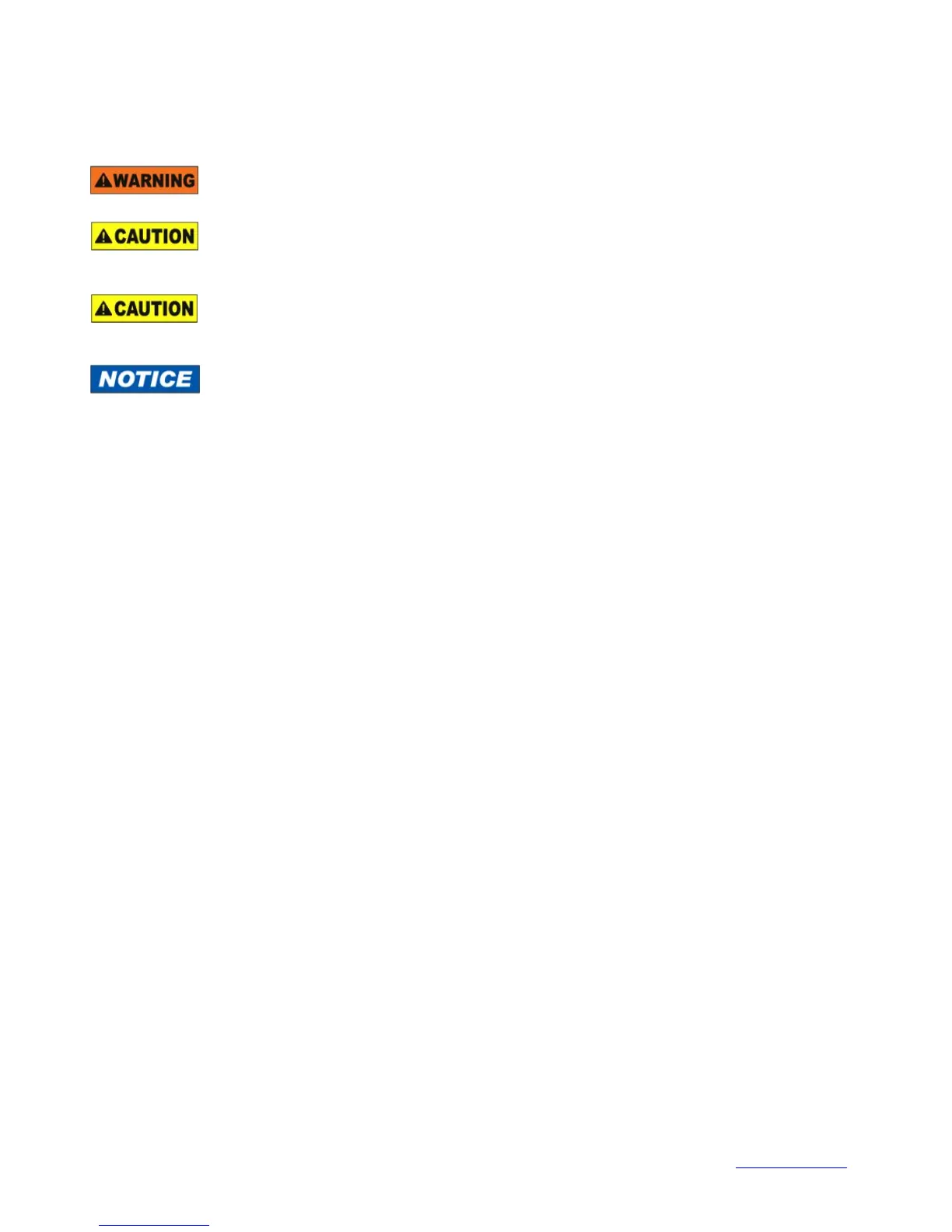Kodiak Recirculating Chiller Technical Manual
Manual # 820-0109, Rev. Y, 07/08/10 - 26 - Check Lytron’s website www.Lytron.com
for the most current technical information.
DRAINING PROCEDURE FOR KODIAK CHILLERS
Always disconnect power to chiller when performing service. Failure to do so could result in
damage to the equipment, personal injury and/or death.
A container should be available to hold the fluid removed from the chiller. This container
should be labeled in accordance with OSHA rules and regulations concerning handling of the
fluid being removed from the chiller. Failure to do so could result in personal injury.
Reference the MSDS sheet for the fluid being removed from the chiller for further handling,
storage, and disposal instructions. Disposal of fluid removed from the Lytron chiller should be
in accordance with all Local and Federal disposal laws. Failure to do so could result in personal injury.
Not following this procedure may result in extensive damage to the chiller. It is extremely
important to completely drain the chiller when not in use for extended period of time, shipping
outside of its current location, during certain repairs, and for scheduled fluid maintenance. Failure to fully drain
the system could result in damage of the equipment. Lytron recommends method #1 as the most efficient way
to remove fluid from the chiller.
Method #1- Recommended
1. Lytron recommends using a wet/vac to thoroughly remove fluid from the chiller. Remove plastic cap
from top of the clean fluid reservoir. Vacuum this tank until it is completely free of any fluid. Keep
reservoir cap removed from reservoir until step #5.
2. Using wet/vac, first vacuum the “supply” connection located at the rear of the chiller. After all the fluid
has been removed from the supply side, move vacuum to the “return” connection. Vacuum this
connection until all fluid has been removed.
3. Remove side panel of chiller to expose the tank drain hose. The drain line is a ½” braided hose
terminated with a white PVC cap. The drain line branches off from a tee on the chiller return line.
4. Remove plastic cap plug and place vacuum at the end of the hose. Vacuum any remaining fluid from
the system. (Note: make sure reservoir cap is removed, allowing air to enter system).
5. Install plastic cap plug to the end of the drain hose. Install side panel. Attach plastic cap to the clean
fluid reservoir. Install chiller cover.
Method #2- without access to wet/vac
1. Remove chiller cover. Remove reservoir plastic cap. Keep reservoir cap removed from reservoir until
step #4. Remove side panel of chiller to expose the tank drain hose. The drain line is a ½” braided hose
terminated with a white PVC cap. The drain line branches off from a tee on the chiller return line.
2. If possible, elevate the chiller approximately 3’ off the ground. This will allow you to drain the system
into a 5-gallon bucket.
3. Remove the plastic cap plug from the end of the hose. (Note: make sure reservoir cap is removed,
allowing air to enter system). Drain the system into a 5-gallon bucket. Because this process is relying
on gravity, it may take a few minutes to completely drain the system. If the volume of your system
exceeds 5 gallons, have a second bucket nearby.
4. Install plastic cap plug to the end of the drain hose. Install side panel. Attach plastic cap to the clean
fluid reservoir. Install chiller cover.
